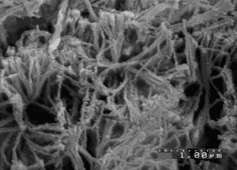Published online by Cambridge University Press: 03 January 2014

Ordered 30-nm Co1−xSnx (0 ≤ x ≤ 0.78) nanowire arrays have been prepared by co-electrodeposition of Co and Sn into pores of homemade anodized aluminum oxide (AAO). The magnetic properties of the Co1−xSnx nanowires are presented as a function of Sn content (x), annealing, electrolyte pH, electrodeposition frequency, and wave form. The result of energy-dispersive x-ray spectroscopy (EDX) showed anomalous co-deposition for Co and Sn. The nanowires have uniaxial magnetic anisotropy with easy magnetization direction along the nanowire axis due to the large shape anisotropy. As-deposited and annealed alloy nanowires, determined by x-ray diffraction (XRD), have amorphous phase. The nanowires electrodeposited at different pH and the electrodeposition frequencies have significantly different magnetic properties. Magnetization measurement showed that variation in magnetic properties of the nanowire arrays rooted in surface formation of Co(OH)2 and Sn(OH)2 in upper pH. The XRD patterns of Co and Co0.97Sn0.03 of nanowires obtained at pH = 2 and 4 obviously illustrated that pH affects the crystal structure of Co nanowires but has no effect on alloy nanowires. Moreover, the precipitation process was affected by raising the electrodepositing frequency via changing the rate of reduction of solute ions. The electrodeposition wave form has no significant effect on nanowire magnetic properties. The considerable enhanced coercivity has been measured in annealed nanowires. Experimental data demonstrate that the optimized composition for annealed Co1−xSnx nanowire is around Co0.93Sn0.07 in which the coercivity (Hc) has a maximum value of 2030 Oe.